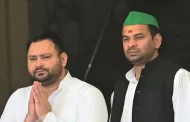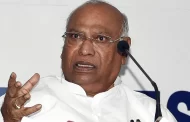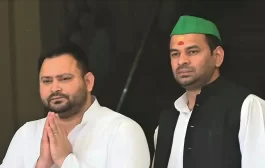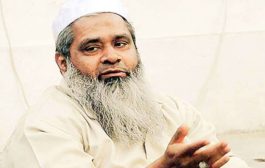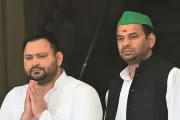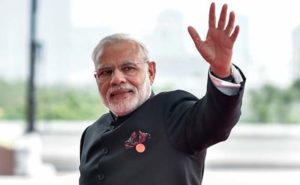
Narendra Modi is a busy man. With Assembly elections being held in five states, the Prime Minister is crisscrossing the Hindi heartland addressing multiple rallies a day. Voters in Uttarakhand will cast their ballots on Wednesday. Before the campaign window comes to a close, Modi addressed the crowd in Haridwar on Friday, went to Pithoragarh on Saturday and visited Shrinagar and Rudrapur on Sunday for two more meetings. In short, four election rallies in the hilly state within three days.
On Monday, the last day of campaigning before the second phase in UP involving 67 Assembly constituencies spread across 11 districts, the Prime Minister flew down to Lakhimpur for another rally. India’s largest state will witness seven-phase elections and the Prime Minister is scheduled to address two rallies in each phase, taking his total number of public meetings to 14 in UP alone. These, of course, are in addition to his rallies in Punjab and Goa which went to polls earlier.
During 2015 Bihar elections, BJP pressed Modi into service 30 times. It still lost. This time the overall number might be a little lower but only marginally so.
Interestingly, the lack of a credible, local mass leader was said to be one of the reasons behind BJP’s defeat. It suggested that the ‘Modi wave’ of 2014 was well and truly over. While the Prime Minister retains his personal popularity, it is no longer enough to paper over the absence of strong candidates who could be projected as CM. As democracy seeps down, voters seek more and more local empowerment barring the rare tectonic shift of a wave election. The electorate is also discerning enough to differentiate between Assembly and Lok Sabha polls. Bihar and Delhi debacles also taught the BJP that in such cases, too much of Modi only makes him vulnerable.
In his column for Times of India, R Jagannathan writes: “The easy gains in 2014 (Haryana, Jharkhand, Maharashtra and J&K) made the BJP leadership believe that Modi’s popularity was enough to win most states. In 2014, the Modi wave was still strong and the opposition in disarray. But post-2014, the party hasn’t won a single state without projecting a leader (it lost Delhi and Bihar badly, and won Assam handsomely only with a CM candidate)… The electorate knows it will get Akhilesh Yadav as chief minister if the SP-Congress coalition wins, but it is not sure what will emerge from the black box if BJP wins.”
There is some truth in the analysis. In Punjab, BJP is a minor ally. In Goa, it has dangled the tantalising possibility of Manohar Parrikar deserting his Union cabinet portfolio and returning to the state in absence of another tall leader. In Uttarakhand, it has the momentum but lacks a credible face. In UP, the party’s state leaders are simply not up to scratch. The likes of Yogi Adityanath, Uma Bharti, Kalraj Mishra or UP unit chief Keshav Prasad Maurya may wield some influence in pockets but they cannot shoulder the party’s prospects alone or appeal to the undecided, floating voters. Party president Amit Shah is also addressing a lot of rallies but he is more of a tactician, a backroom operator rather than a mass leader with grassroots appeal.
This creates a vacuum in BJP’s political messaging. In contrast, there is no confusion among voters when it comes to Samajwadi Party or Bahujan Samaj Party. Both outfits have naturally mounted a presidential form of campaign seeking to exploit BJP’s vulnerability. An interesting paradox has emerged. While multiple opinion polls have projected BJP as the dominant party in UP, it fades away as Akhilesh Yadav and Mayawati come to the fore when it comes to the question of choosing a CM.
BJP knows this. Despite the cosmetic bluster, it is painfully apparent that BJP is caught in a bind when it comes to using its greatest weapon. While taking a lesson from Bihar it has tried to limit Modi’s exposure in a complex state of diverse demographic, but it still tends to reflexively fall back on him in a tight contest. BJP’s hoardings in UP therefore have Modi as the most prominent face while local leaders lie much reduced in screen size and influence. The depressing reality of Bihar is evident.
To a certain extent it is understandable. Modi is BJP’s star campaigner. Still, the over-reliance on his charisma speaks ill of a party which prides on “being different”.
A voter in Gangoh, UP, tells Gyan Varma of Livemint: “Even if there is only an empty chair as a representative of (Narendra) Modi, we will vote for that chair. Modi is the most popular leader, people voted for him in 2014 and the support has not vanished. The rise in crime and the inability of police to control it has angered people even more against Akhilesh Yadav.”
Attending a rally in Kithaur constituency on the outskirts of Meerut, Jyoti Malhotra of Economic Times finds “several young BJP boys in saffron hats chanting “Modi! Modi!” even though they know that Rajnath Singh, and not the PM, is expected.”
The problem is a structural one.
The margin, scale and significance of 2014 win not only elevated Modi to BJP’s stratosphere, it also changed the way the party functions in an irreparable way. It became much more like the Congress which takes a top-down approach to power. BJP still enjoys a greater dissemination of power compared to most parties but the chain of command has become centralised. Modi is now the undisputed star, the first among equals. It still has some strong regional satraps but none can rival the former Gujarat CM in authority and control.
As 2014 showed, this has benefits. A clear chain of command keeps rebellion under check in a party that is large and has a huge national footprint. In the three years that he has been in power in Delhi, Modi has pushed through his inclusive agenda of ‘sabka saath, sabka vikaas‘. Under him, BJP’s focus has shifted from identity politics to ‘development’. He has defanged some of the troubling fringe elements and dragged BJP into a more centrist, even leftist space in national politics.
In a country where civil society’s influence has often been greater than even the power wielded by the state, Modi has used the clout in his command to hasten a social equality, cutting through caste and community barriers.
But while these have been happening, BJP’s internal federal structure has inevitably weakened. The regional satraps like Vasundhara Raje, Shivraj Chauhan or Raman Singh and still powerful but they are largely restricted to their spheres. And no new mass leaders in states where there were none, have come up. Modi’s outsized influence means that BJP is caught in a meta problem. The party cannot do without his charisma and influence but in doing so, it is also reducing the chances of another Modi coming up the ranks. This power equation may alter depending on what happens in UP. For that, we need to wait till 11 March.(FP)



